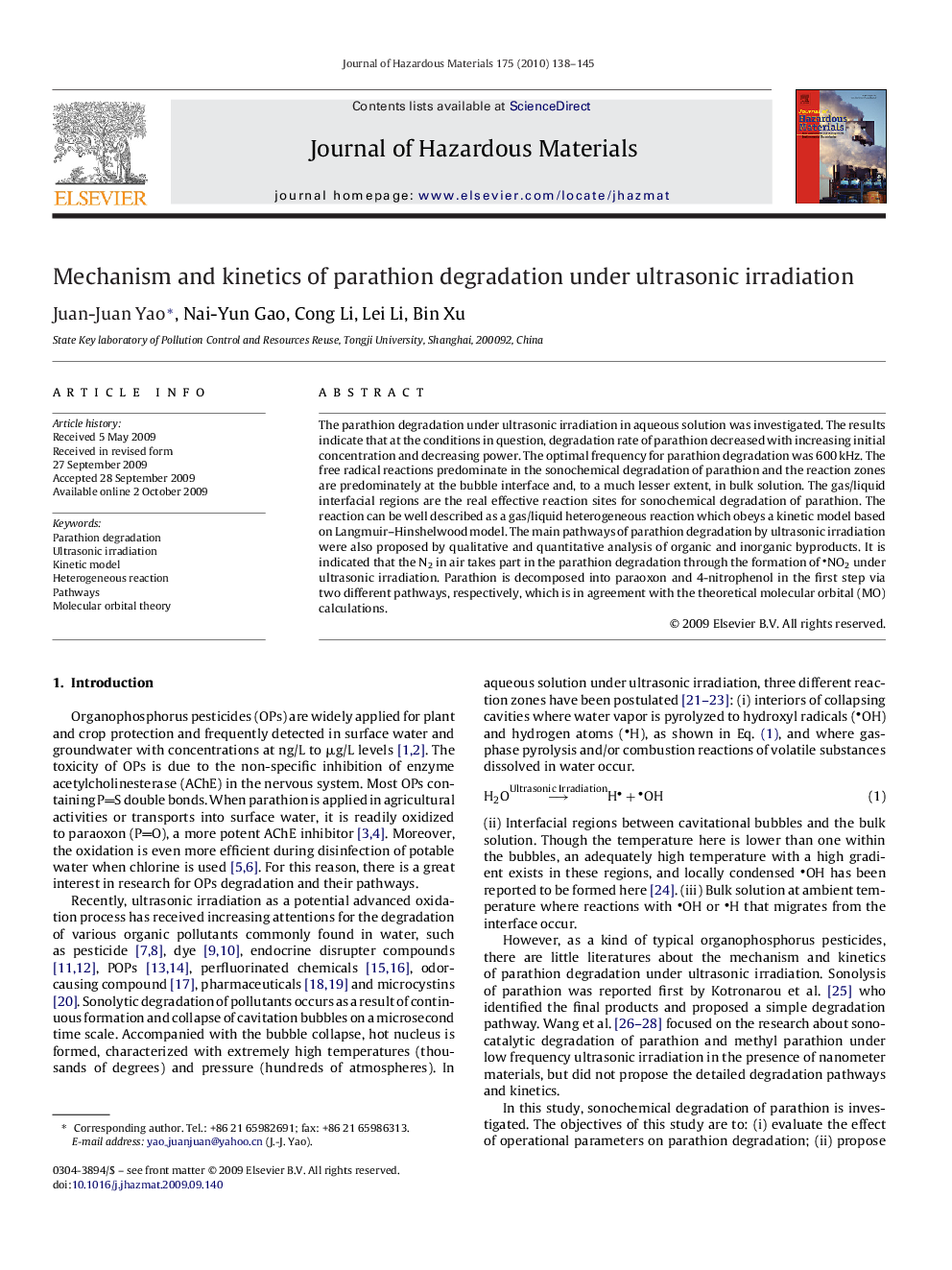| Article ID | Journal | Published Year | Pages | File Type |
|---|---|---|---|---|
| 580438 | Journal of Hazardous Materials | 2010 | 8 Pages |
Abstract
The parathion degradation under ultrasonic irradiation in aqueous solution was investigated. The results indicate that at the conditions in question, degradation rate of parathion decreased with increasing initial concentration and decreasing power. The optimal frequency for parathion degradation was 600Â kHz. The free radical reactions predominate in the sonochemical degradation of parathion and the reaction zones are predominately at the bubble interface and, to a much lesser extent, in bulk solution. The gas/liquid interfacial regions are the real effective reaction sites for sonochemical degradation of parathion. The reaction can be well described as a gas/liquid heterogeneous reaction which obeys a kinetic model based on Langmuir-Hinshelwood model. The main pathways of parathion degradation by ultrasonic irradiation were also proposed by qualitative and quantitative analysis of organic and inorganic byproducts. It is indicated that the N2 in air takes part in the parathion degradation through the formation of NO2 under ultrasonic irradiation. Parathion is decomposed into paraoxon and 4-nitrophenol in the first step via two different pathways, respectively, which is in agreement with the theoretical molecular orbital (MO) calculations.
Related Topics
Physical Sciences and Engineering
Chemical Engineering
Chemical Health and Safety
Authors
Juan-Juan Yao, Nai-Yun Gao, Cong Li, Lei Li, Bin Xu,
